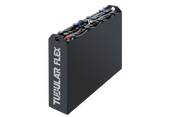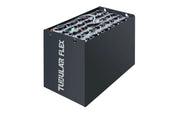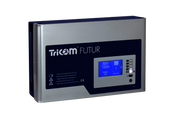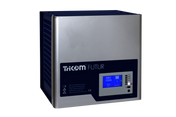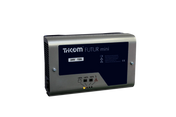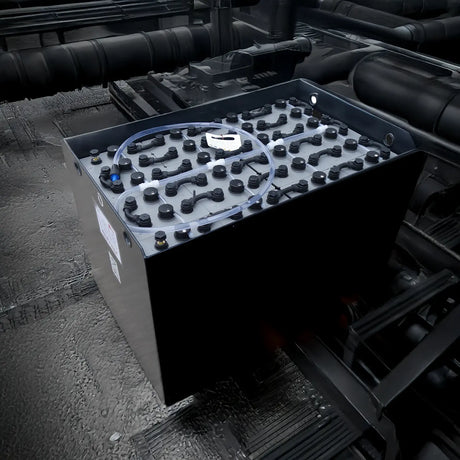The capacity of a forklift battery is one of the key factors for the reliable operation of your industrial truck. It not only influences the runtime per charging cycle, but also determines the right battery choice for your specific needs. But what exactly does "capacity" mean for a battery – and how high should it be?
In this article, you will learn how the capacity of a forklift battery is calculated, what typical sizes are available, and how to determine the right capacity for your application.
What does capacity mean for a forklift battery?
The capacity of a battery indicates how much electrical energy it can store . It is measured in ampere-hours (Ah) and describes how long a defined current flow can be provided.
Example:
A 625 Ah battery can deliver 125 amps for 5 hours – or 62.5 amps for 10 hours.
The higher the capacity, the longer a forklift can operate on one charge – provided the voltage and consumption profile are suitable for the vehicle.
Typical capacity ranges of forklift batteries
Capacity depends on several factors: size, cell count, voltage (24V / 48V / 80V), and battery type. Here's an overview of common variants:
Table: Typical capacity ranges by voltage
|
Battery voltage |
Area of application |
Typical capacity (Ah) |
|---|---|---|
|
24 volts |
Compact forklifts, pallet trucks, cleaning equipment |
180 Ah to 625 Ah |
|
48 volts |
Medium-sized electric forklifts |
400 Ah to 1000 Ah |
|
80 volts |
Heavy-duty forklifts, multi-shift operation |
620 Ah to 1550 Ah and above |
What capacity does my forklift need?
The required capacity depends largely on the vehicle's power consumption , the daily operating time and the usage profile (e.g. load weight, travel distances, lifting frequency).
As a rule of thumb:
- 1-shift operation, simple driving profiles → standard capacity according to the manufacturer is usually sufficient.
- Multi-shift operation, high load → Higher capacity or replacement battery required.
- Short usage cycles, high charging frequency → Lithium-ion batteries with quick charging function possible.
Tip: Take a look at your vehicle's type plate or contact the battery manufacturer – all technical requirements are listed there.
Influence of capacity on regeneration and lifetime
Interestingly, a battery that's too large can lead to sulfation during partial load operation, resulting in premature capacity loss. A battery that's too small, on the other hand, is frequently deeply discharged—which also shortens its service life.
The right capacity is crucial for:
- the actual running time in operation
- the cycle stability (how often it can be charged)
- the efficiency of regenerations
- the profitability of your forklift fleet
Conclusion: Choose capacity carefully – not too much, not too little
Capacity is one of the key parameters when selecting or replacing a forklift battery. It's crucial that it's precisely matched to your vehicle's energy needs. Oversizing is just as inefficient as undersizing. Therefore, seek professional advice.
HK Handels GmbH helps you select the right battery capacity – whether reconditioned, used, or new. We analyze your needs and deliver customized solutions for maximum runtime and efficiency.


